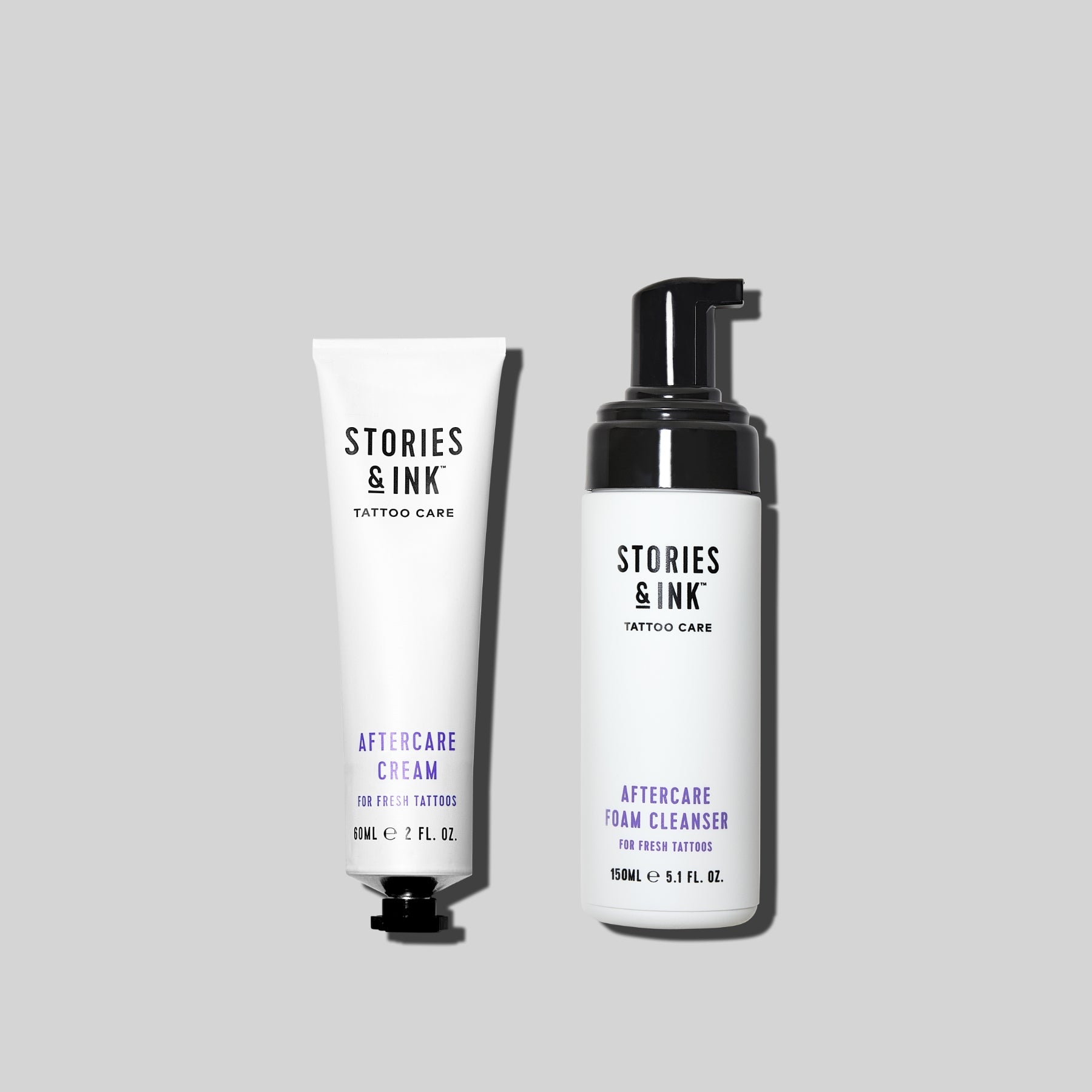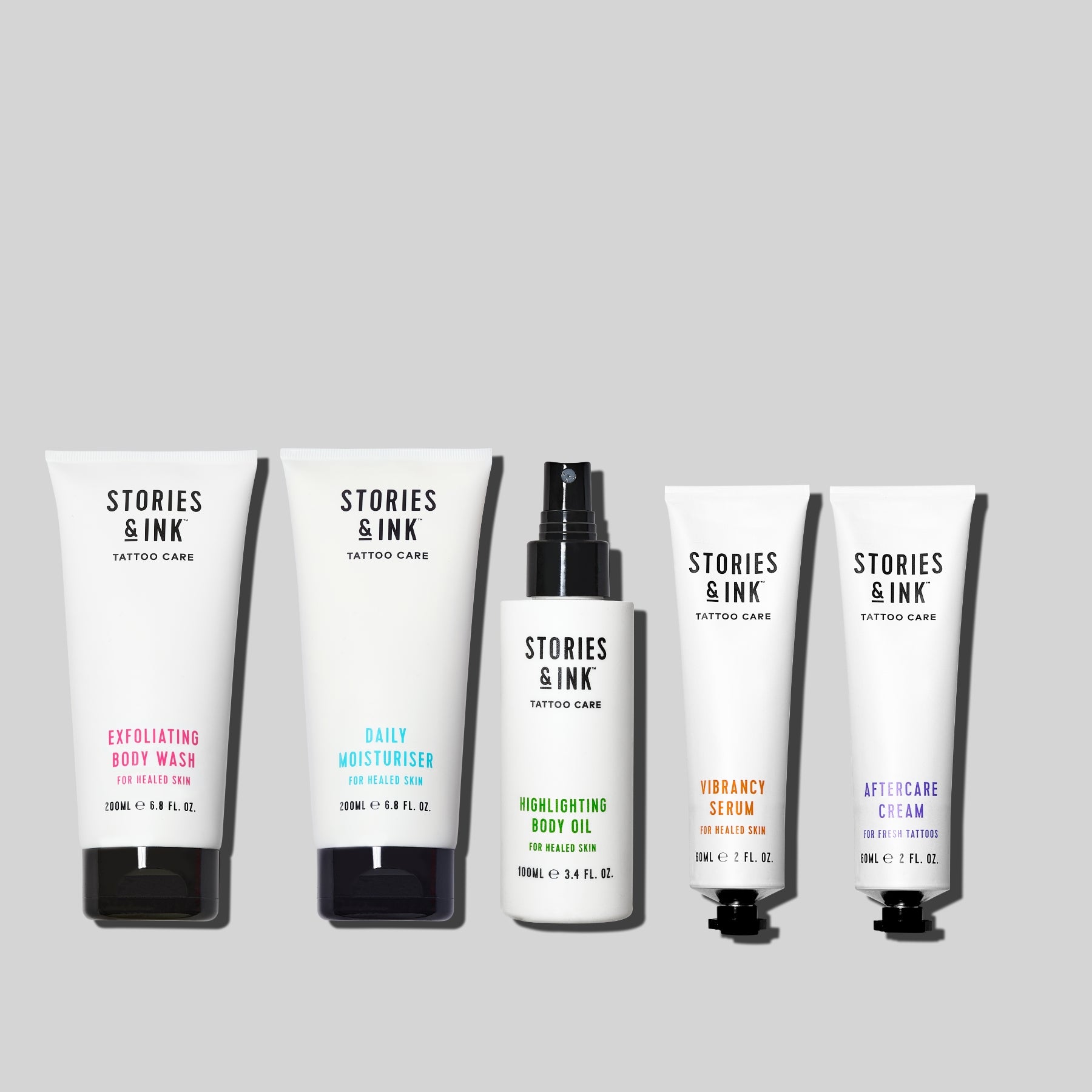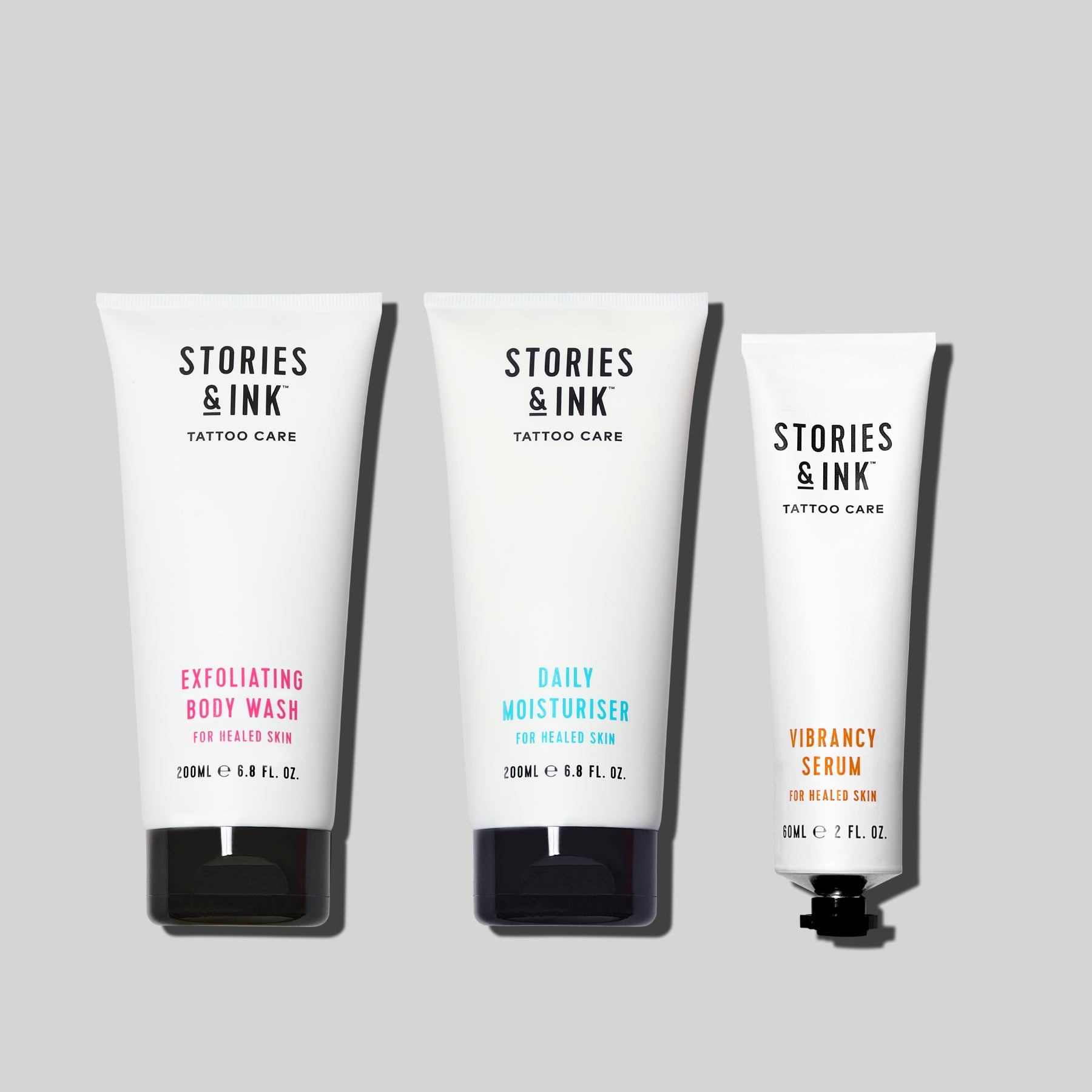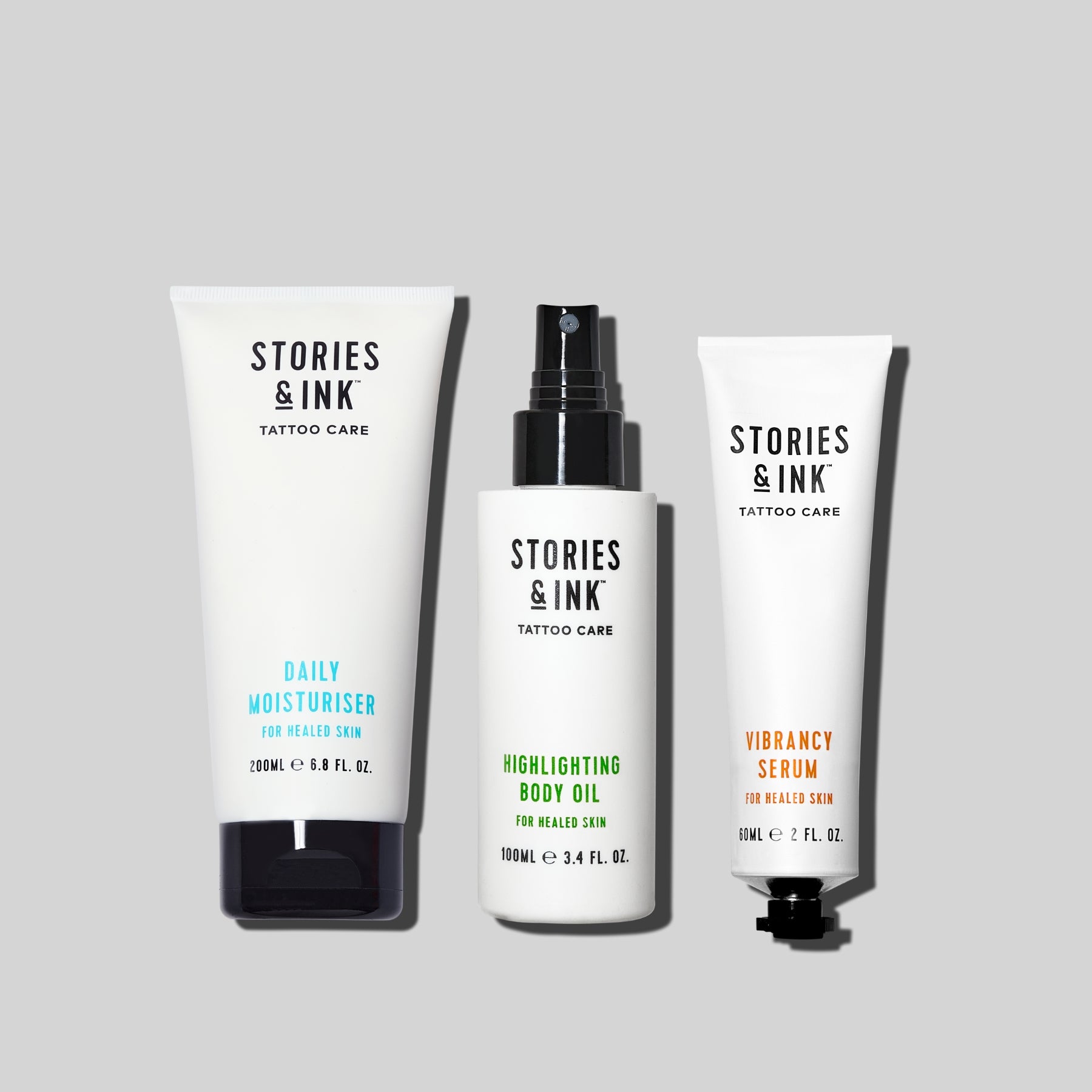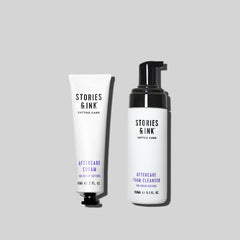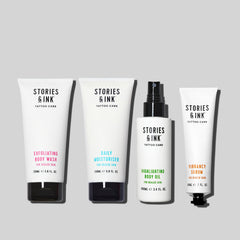
In our latest artist highlight, we shine the spotlight on the bold, black, and beautifully crafted tattoos of Kamila Daisy.
Born and raised in Kent and now based in London’s legendary Good Times Tattoo, Kamila Daisy (@kamiladaisytattoo) has spent the last 15 years carving out a space for herself in the tattoo world — first in busy walk-in shops, and now through her unmistakable ornamental florals. We spoke with her about first tattoos, folk art, and finding freedom in solid black.
How did you get into art/tattooing?
Growing up, I didn’t get on with school and never felt especially inspired by the education system, so I ended up a bit bored and at a loss for what to do with myself. I did what a lot of bored frustrated kids in towns do – listened to music, hung out with friends and expressed any creative side I had through home hair-dye jobs and DIY clothing modifications. There’s not too much to romanticise, really.
If anything, I have tattooing to thank for my love of art, rather than the other way around. The music I listened to and the fashion I was drawn to got me interested in tattoos, and then I kind of fell into it. Regardless of how you get into tattooing, it demands a lot of commitment and hard work but I’m incredibly grateful for the life it has allowed me to lead so far.

"I have tattooing to thank for my love of art, rather than the other way around"
Was there a moment when you knew this would be your path?
My family started visiting India a fair bit from when I was about 11, and I was immediately drawn to all the henna. I’d load up on it and come home to deface my limbs, which was apparently a sign of things to come. Although I love all the beautiful Mehndi I’d see out there, I rarely attempted anything as elegant, it was more like band logos and anarchy symbols.
I didn’t really think of tattooing as a job until I started paying for tattoos at 17. Not because I didn’t think it was a ‘real job’, just that when I saw people with tattoos, they may as well have been birthmarks. I was curious about them, but it never occurred to me that someone had actually spent time creating them.
It wasn’t until I handed a tattooist some money and thought, "If you’re charging this much to everyone you tattoo today, I suppose this is an actual job." That’s when I first started to seriously consider it, and just under two years later, I started my apprenticeship at that same studio.
Your tattoos have a bold, almost storybook quality — what drew you to folk art as a source of inspiration?
I’ve always been drawn to it, even before I knew that the things I enjoyed doing and looking at had their roots in folk art – cutting paper snowflakes and making paper doll chains as a child, collecting matryoshka dolls, the Mehndi I loved in India, or the flowers I’d see painted on the canal boats moored on the side of the river in the town I grew up.
It’s around us everywhere in the day-to-day, like the things mentioned above and also fashion and decor. High street brands and department stores use Fair Isle patterns on their clothes, reimagine cross stitch and European embroidery, sell furniture painted with designs inspired by Scandinavian folk painting. It’s so ubiquitous that it’s often not even noticed as art.

"Trying to learn conventional drawing techniques felt constrictive"
When I first started trying to take art more seriously, I always liked the idea of sitting and sketching out a scene in front of me, or enjoying a life drawing class, but I was always just left feeling frustrated.
Trying to learn conventional drawing techniques felt constrictive and didn’t make sense to me, it felt like maths. Folk art isn’t rule-bound or realistic. It ranges from extremely simple, messy, playful looking shapes and doodles, all the way up to intricate, elegant, methodical patterns.
It’s communal, it’s been around for as long as we have – it’s art made by and for ordinary people. It’s not elitist or exclusive and I love that about it.
What do you love about working in solid black ink?
The bolder it is, the clearer the aliens can see it, so I’m reaching a further target audience!
I also just don’t have a great understanding of colour. When I’ve tried to work with a large range of colours I’ve always felt that it ends up looking a bit like I don’t know what I’m doing, which is true.
I’m happy to put some colour into someone’s tattoo if they request it and I think I can make it work, but black allows me to focus on what I do understand, which is composition, balanced shape and negative space. I think when I can put those elements to work with black ink, it provides the most effective outcome.

"Black allows me to focus on composition, balanced shape and negative space"
What was your first tattoo—both the one you gave and the one you received?
The answer to both questions is actually the same tattoo. I was about 15 years old, and my best mate and I decided to tattoo each other’s initials on our ankles with a safety pin and drawing ink.
As I have five names, we agreed that we’d just do the first and last initials. Obviously we didn’t stencil anything on first, and I realised when I was halfway through her second initial on my own ankle, that I’d absentmindedly started doing her middle initial. In the name of fairness, she agreed to just pick one of my middle names (Daisy) and do three initials on herself too, so we had NFS and CDC (Kamila with a ‘C’).
I later covered up her initials on my ankle with another safety pin job and she noticed it. Obviously she was pretty upset about that, and since then has told people that CDC stands for Cool Dudes Chillin’, which I think is fair enough (it also has a better ring to it than the Centre of Disease Control).
Although it’s not the most professional approach to a first tattoo, when I speak to other tattooists in my generation, it seems like it was a rite of passage.

"I take inspiration from Mehndi and Kolam designs, Mandalas and other Eastern influences"
How has your style or approach evolved over time?
I did my apprenticeship in a shop where nothing was turned down, and over the next eight years I continued to work at busy walk-in shops, so the first half of my career wasn’t really style based. I was more focused on learning the technical side of tattooing.
When I had the chance to specialise in a particular style, my earlier experiences in India were still very much with me, so I would take inspiration from Mehndi and Kolam designs, Mandalas and other Eastern influences like sacred geometry.
I still love this style and I’m happy to do it if people ask me for it, but when the pandemic happened, I had a chance to step back and experiment with different mediums. Like a lot of tattooists, I found that I really enjoyed lino printing. It lent itself better to bolder and less uniform designs, and from there I progressed into the bolder floral work I do now.
When I look back through my work, it feels like I’m looking back at my own handwriting. It doesn’t always look the same, and I recognise when I was trying something new out, or where I got taken down a different path, but it still looks like I did it, so I think it would work the other way round too.

What’s one small thing another artist did or said that really stayed with you?
While I was apprenticing, someone at the shop spelled something wrong on a tattoo. They were one of the younger lot, and they pulled the “the customer checked the stencil, so it’s their fault” card.
The person I was apprenticing under wasn’t having any of it. He said, "It doesn’t matter if they check it 100 times, it’s your duty to make sure you don’t make careless mistakes like that."
It sounds obvious now, but if I hadn’t heard that early on, I might’ve taken the same attitude as the other tattooist. Instead, I’ve always been meticulous with stencilling. When I did more script, I’d triple-check spelling, confirm with parents that they’d really spelled their kid’s name that way, or look up the quote if it was from someone famous.

Now that shows up more in symmetry or matching tattoos. If a stencil needs warping, or one side needs drawing differently to trick the eye, then that’s what we do. I never say, "Well, the body isn’t symmetrical, so the tattoo never will be." For me, that’s just the same lesson applied differently: do everything you can to make it right.
If I’ve done everything I can think of and the stencil still feels off, I point it out. Sometimes the client has the answer – you’re looking straight on, but they’ll live with it in the mirror. If they don’t, at least they can choose whether it’s something they’re okay with, or if they want to change the design or placement.
How do you want your tattoo legacy to be remembered—not just by clients, but by other artists?

I think there’s a lot of pressure these days to leave behind some kind of legacy. Not just in tattooing, but in life in general. Like if you don’t make a big, dramatic mark on the world, then you somehow didn’t do enough, and I don’t really subscribe to that.
I’d be more than happy to just be remembered by the people in my life as a decent human. Someone who cared about what I did, tried to make cool stuff when I wasn’t getting distracted, was a good laugh, and generally had a fun, fulfilling life. If people remember me that way, I’ll chalk that up as a success.
